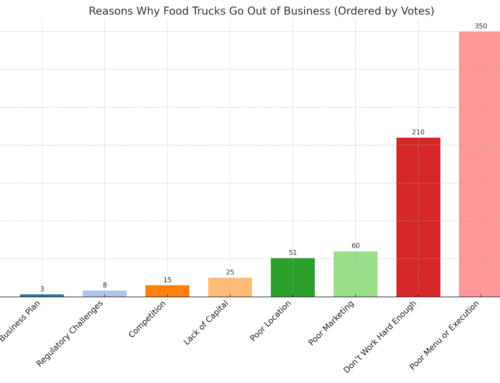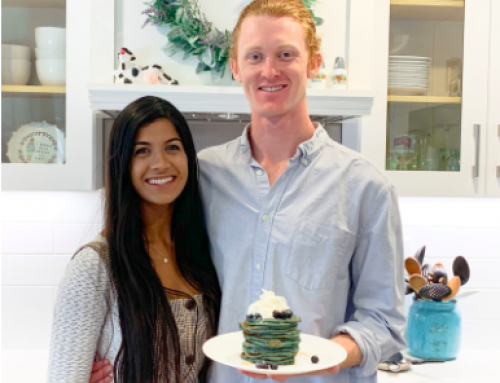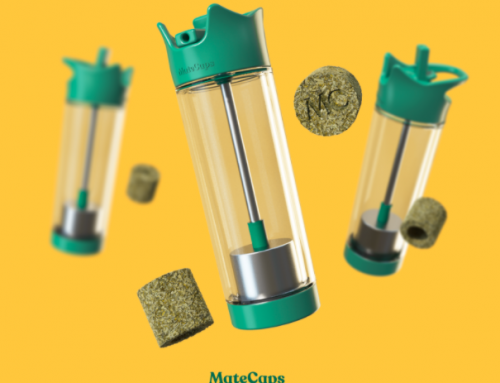Hello! Who are you and what food business did you start?
Hello! I’m Amy Zitelman, CEO and cofounder of Soom Foods. I started the company with my older sisters, Shelby and Jackie, when we fell in love with the magic of tahini. We set out to make tahini a more popular ingredient in the American market.
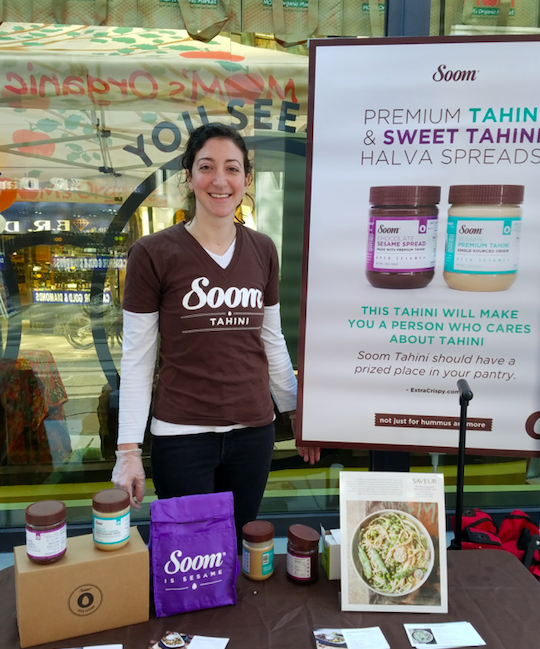
Tahini is a paste made from roasted and pressed sesame seeds. It’s a popular ingredient in Mediterranean and Middle Eastern cuisine, most notably used to make hummus.
We are working to position Soom Foods to become the most well-known and trusted brand of tahini and tahini products in the American market. Our flagship product is Soom Premium Tahini – 100% roasted and pressed Ethiopian White Humera sesame seeds.
Soom tahini is a delicious, nutritious and versatile ingredient – 2 tablespoons packs 8g of protein, lots of calcium, iron, magnesium, phosphorus and other vitamins and minerals. It’s an amazing ingredient in dips (like hummus!) salad dressings, sauces marinades, smoothies, ice creams, baked goods, the list goes on!
We sell Soom to top restaurants and James Beard Award winning chefs all across the country, and to consumers both online (soomfoods.com and Amazon) and in grocery stores (primarily between DC and NY).
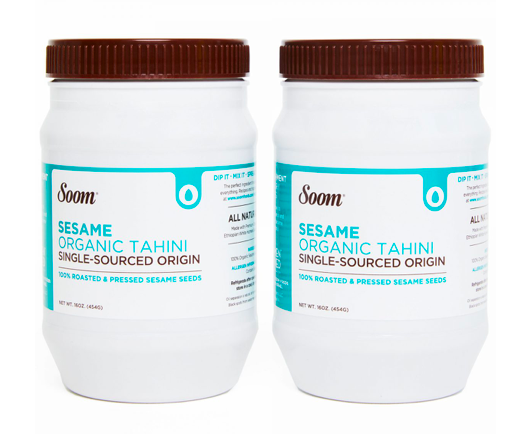
We started with a 20’ container (10,000 lbs) of tahini in 2013 and couldn’t sell through all of it before the expiration date. Now we sell through two 40’ containers a month!
What are your monthly revenue numbers?
Our average monthly revenue is over $150,000.
What’s your backstory and how did you come up with the idea?
The joke is Shelby had a business degree, Jackie married a tahini expert, and I needed a job. The full story is Jackie has been living in Israel since 2008 and was dating her (now) husband, Omri, a tahini broker in Israel. Shelby graduated from Wharton with a degree in Entrepreneurial Management was living in Israel for the year in 2011.

When Jackie introduced Shelby to Omri, and Omri introduced Shelby to the amazing tahini available in Israel, Shelby’s entrepreneurial mind starting churning. Tahini in the US couldn’t compare to the tahini available in Israel – the difference is the use of White Humera sesame that grows in the Humera region of Ethiopia – and the Middle East used tahini in so many inspiring ways, like in baked goods and as a topping on frozen yogurt!
Related Reading: Atlas Bars: How I Sold Over 1 Million Protein Bars
Shelby called me to do some market research – I bought every brand of tahini that I could find and talked to as many people as possible. We came away with a few notable observations.
- We could only find tahini on the bottom shelf of the international aisle.
- Most people weren’t familiar with tahini.
- If someone was familiar with tahini, they couldn’t name the brand sitting in the back of their fridge, and they only used it to make hummus.
So we naively decided, WE should bring good tahini to the states and educate consumers about the ingredient! We wanted to take tahini out of the international aisle and into the nut-butter category and make it a more popular pantry staple.
I studied Communication at the University of Delaware and used many of the interpersonal communication skills I acquired to start talking to people, store owners, and chefs about Soom tahini and why they should use it.
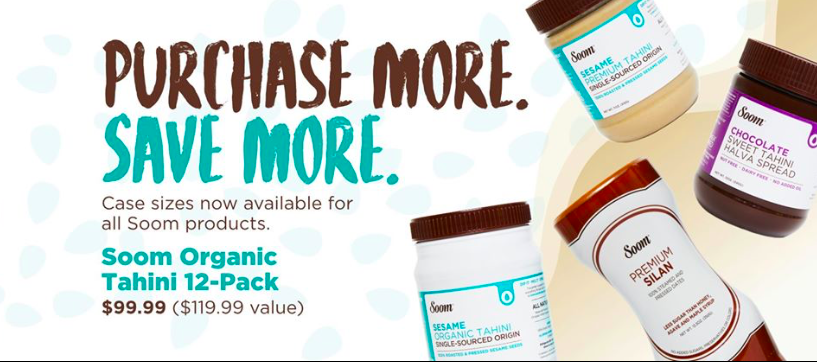
We built a small stipend into our budget to pay me to use my time to prove interest in the product. I spent a year living at my Aunt and Uncle’s house outside Philadelphia and started on our grind.
Take us through the process of developing and testing you tahini.
We wanted to use our resources to focus on sales and marketing, and have contracted out manufacturing of our products. Jackie manages the relationship with our manufacturers in Israel and makes sure all products meet our quality and safety expectations.
Describe the process of launching Soom.
Website and marketing materials were secondary to getting out and sampling the product with potential customers. I made our first sell sheets online and contracted a very mediocre developer to throw up our first site (in hindsight I should have just used wix or square space!) I also managed our social media and had no clear strategy for posting.
We initially financed the business through some family savings and our main costs were financing the inventory since we had a high minimum order quantity.
There was no “launch” – just old school sales and networking, knocking on doors, shipping samples, and eventually we had a few people say “yes!” We continued with a “door-to-door” mentality for years (we still do!)
Biggest lessons learned: something our dad always taught us – it always takes longer and costs more money!
Since launch, what has worked to attract and retain tahini customers?
We view our end customers as our partners and believe that connecting with them authentically is the best way to attract and retain them. We got lucky early on that one of our first customers was (is!) a very influential chef, Mike Solomonov, of the award-winning Zahav restaurant.
We didn’t realize how much his influence would lend credibility to our company and encourage others to try Soom. Mike and other influencers (both professional chefs and the newer social media food influencer community) play a huge role in helping us get the word out about our products.
We didn’t approach Mike thinking he would be an “influencer-partner” we approached him to as a potential client and to fill a need for him and his organization. A true quality partnership should be authentic to the influencer finding value in your product or service.
Related Reading: How I Started a $150K Gluten-Free Bread Company
We decided early on to make our product available on Amazon. We knew people were comfortable purchasing products there, and we wanted to meet potential customers where they were as opposed to the heavy investment it would take to get traffic to our site. We still believe Amazon is a great market, but it comes with it’s challenges.
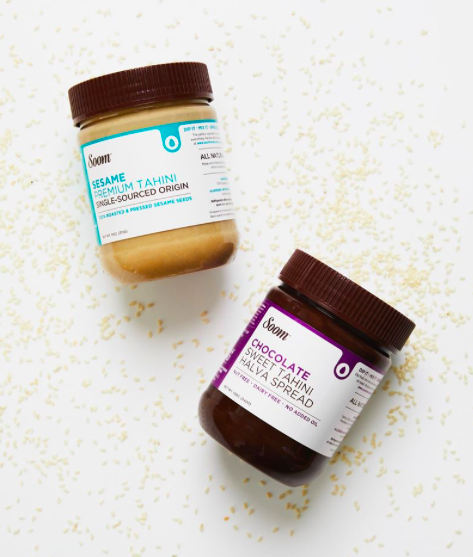
Yes, they take a high margin, but fulfilling through Amazon actually costs less for us than shipping to the customer ourselves.
We have a very small budget for marketing and do very little advertising. The only consistent digital ad we spend on is around $30/day on Amazon. It yields over 10x return for us!
We work with a company that understands Amazon and manages our listings for us. We wholeheartedly believe in outsourcing certain things to professionals – I think the challenging landscape of Amazon is one of those things!
We used to spend a lot more time on social media and be very concerned with likes, but the reality for us was that likes and follows did not directly correlate to sales and revenue. We use social media, primarily Instagram, as a medium for connecting with our customers and sharing recipes for consumer education.
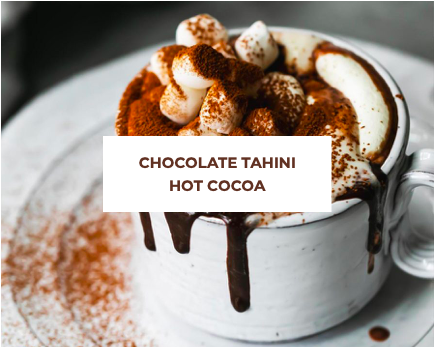
We now invest our time into our newsletter – it’s primarily purpose is connecting with our customers to update them about Soom and share additional recipes to use Soom products. We have several Call-To-Action throughout the newsletter, primarily linking to our shop page, but also linking to our blog and recipe index. This fulfills our primarily mission of authentically connecting with our customers.
We trust they’ll buy from us when they need more tahini – our job is to encourage them to use our products more!
We connect with and retain our restaurant customers by visiting them in person to maintain a more personal relationship, and also include them on our social media and newsletters when it’s appropriate.
What does the future look like?
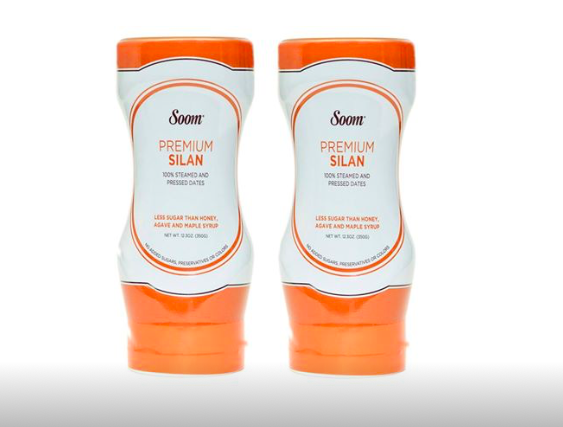
We reached profitability by the end of 2017 and decided to re-invest into our growth and are no longer profitable.
We have three sales channels – food service/ restaurants, ecommerce (soomfoods.com and Amazon) and brick and mortar.
The breakdown is about 60% Food Service and 40% Consumer (mostly online) We’ve partnered with distributors in over half of the States to reach restaurants, and have one retail distributors that sells our products between Northern Virginia and Connecticut.
Our goal is to invest into product development to expand our space in the nut butter category, and develop new tahini products for other categories.
Through starting Soom Foods, what have you learned?
We’ve learned the most through mistakes we made. A big thing we learned is that we do not want to create or sell a perishable product. We spent about 10 months (and a lot of money!) developing a tahini dip for the dairy/hummus category.
The product was delicious but the customer understanding of tahini was too novice. Since it was perishable, we spent a lot of resources keeping the product moving off the shelves to keep up with the expiration date.
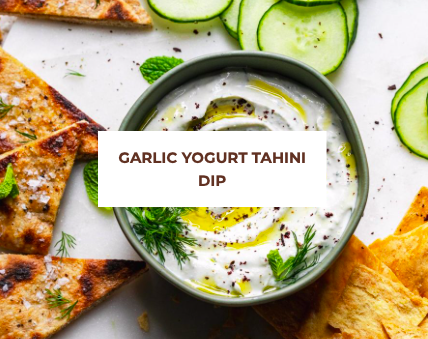
We could say our timing was lucky, but we thought long and hard when we started the company about how tahini would fit into emerging food trends – namely the mediterreanean diet, the rising interest of Middle Eastern cuisine in the restaurant and fast casual industries, and diet trends like paleo, whole30 and vegan/plant based eating.
My takeaway is to really think about all the ways your product fits into current and future dietary wants and needs in the market, hopefully it’s in lots of ways so you have a large pipeline of marketing and sales opportunities.
What are the tools you couldn’t operate your business without?
Nothing special here. We live on Google docs, spreadsheets, and slides!
Any books that have influenced you?
Early on I read “Rubies in the Orchard” by Linda Resnick, a founder of POM. I read it filling in “tahini” or “sesame” for pomegranates throughout her wise words of how to find intrinsic values of a product to meet consumer’s desires.
I also love the book “Presence” by Amy Cuddy. I find interpersonal communication techniques to be crucial in connecting authentically with potential and current customers.
Advice for other food entrepreneurs?
- Don’t be afraid to try something, but be sure to have a timeline to evaluate if it’s working or not.
- Your product doesn’t need to be perfect to start sharing it with people or even selling it. It just needs to be good enough. Nothing can help shape a product into a great product better than honest consumer feedback.
- Try to discern what’s “fluff” and what’s truly important for an early stage venture. Important: a good, safe product. “Fluff” how pretty your website is.

